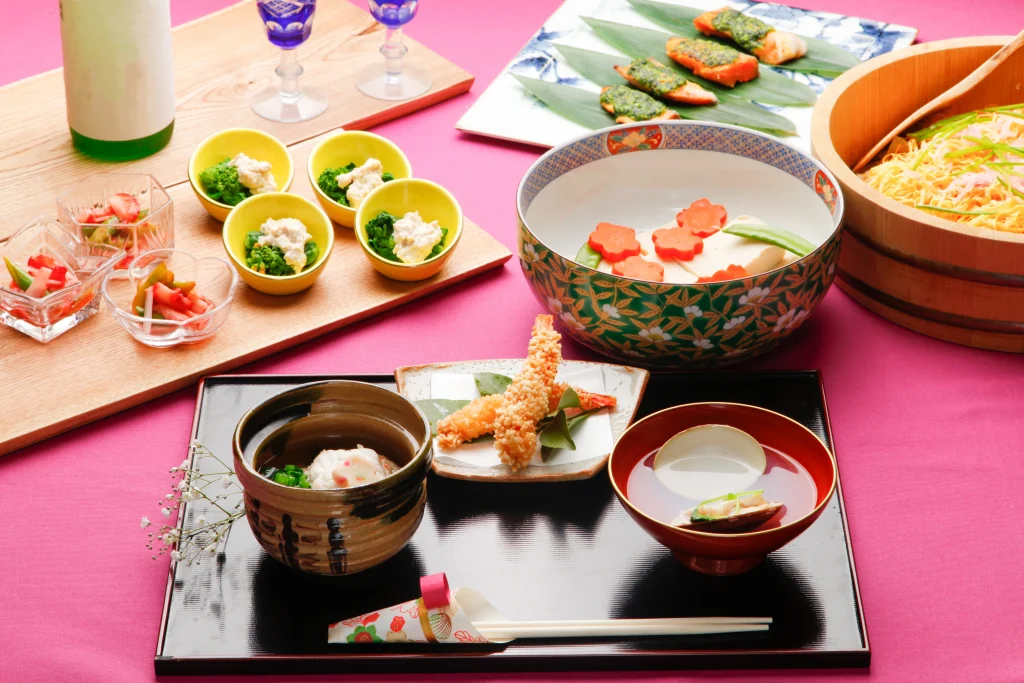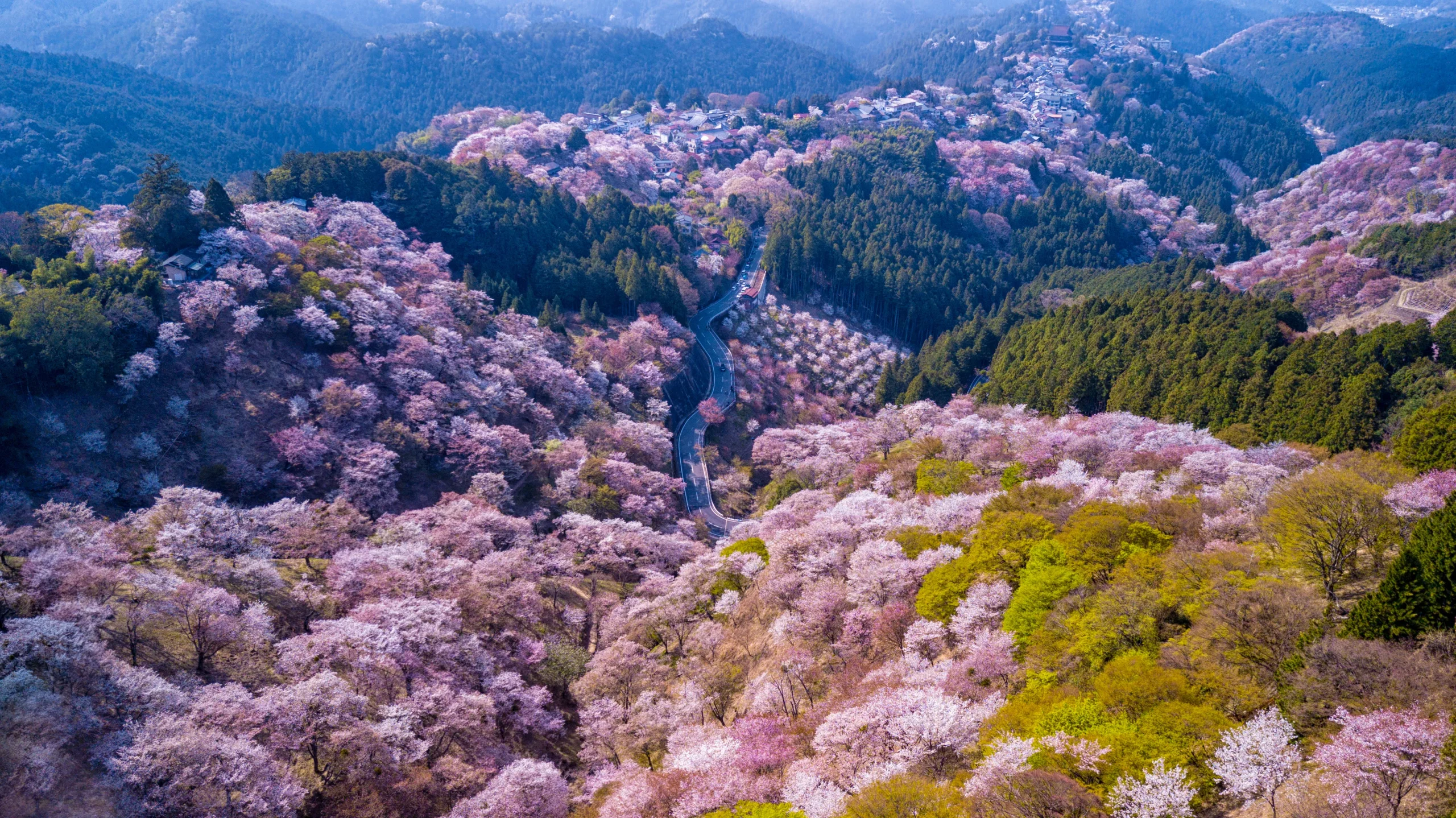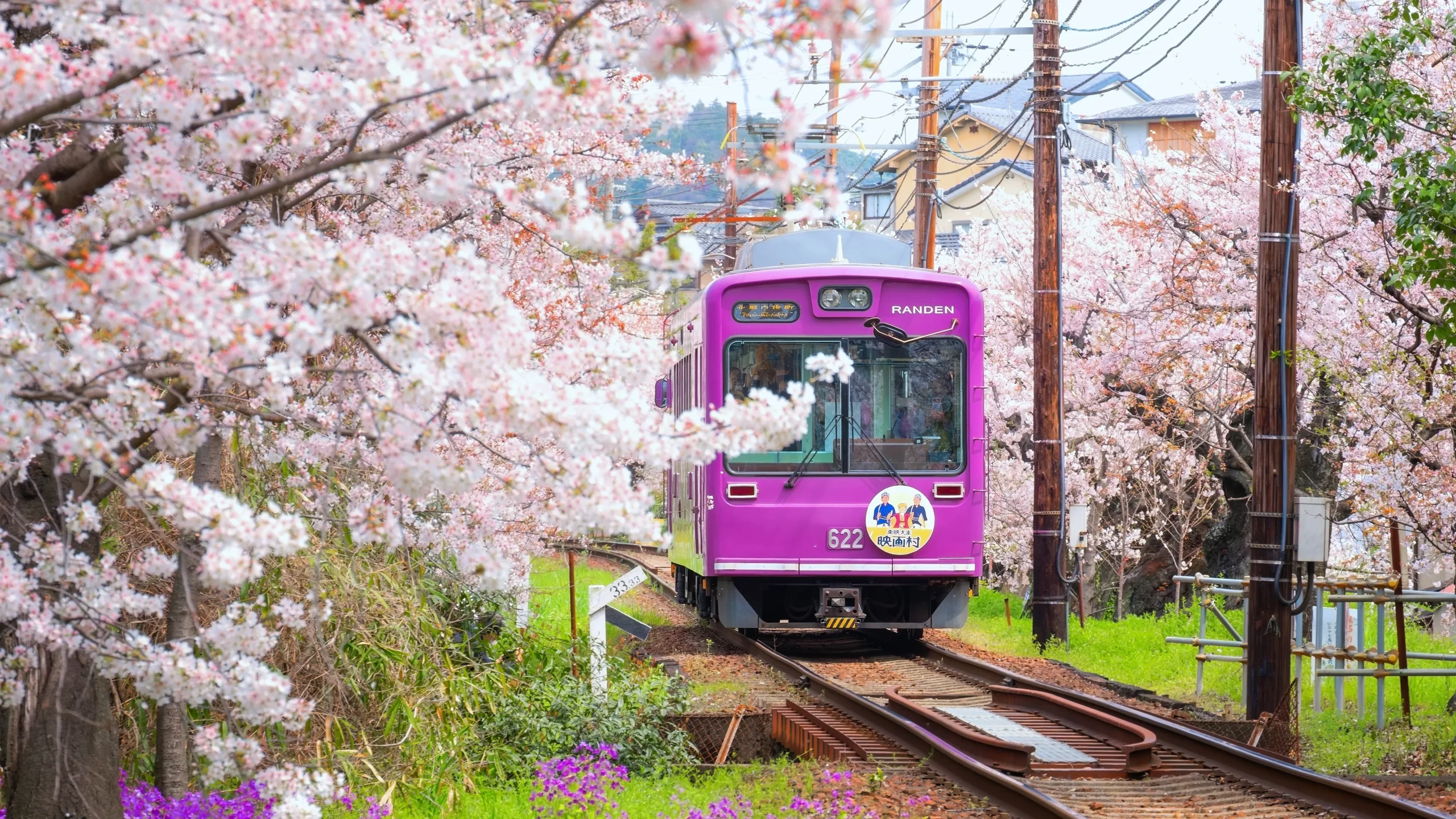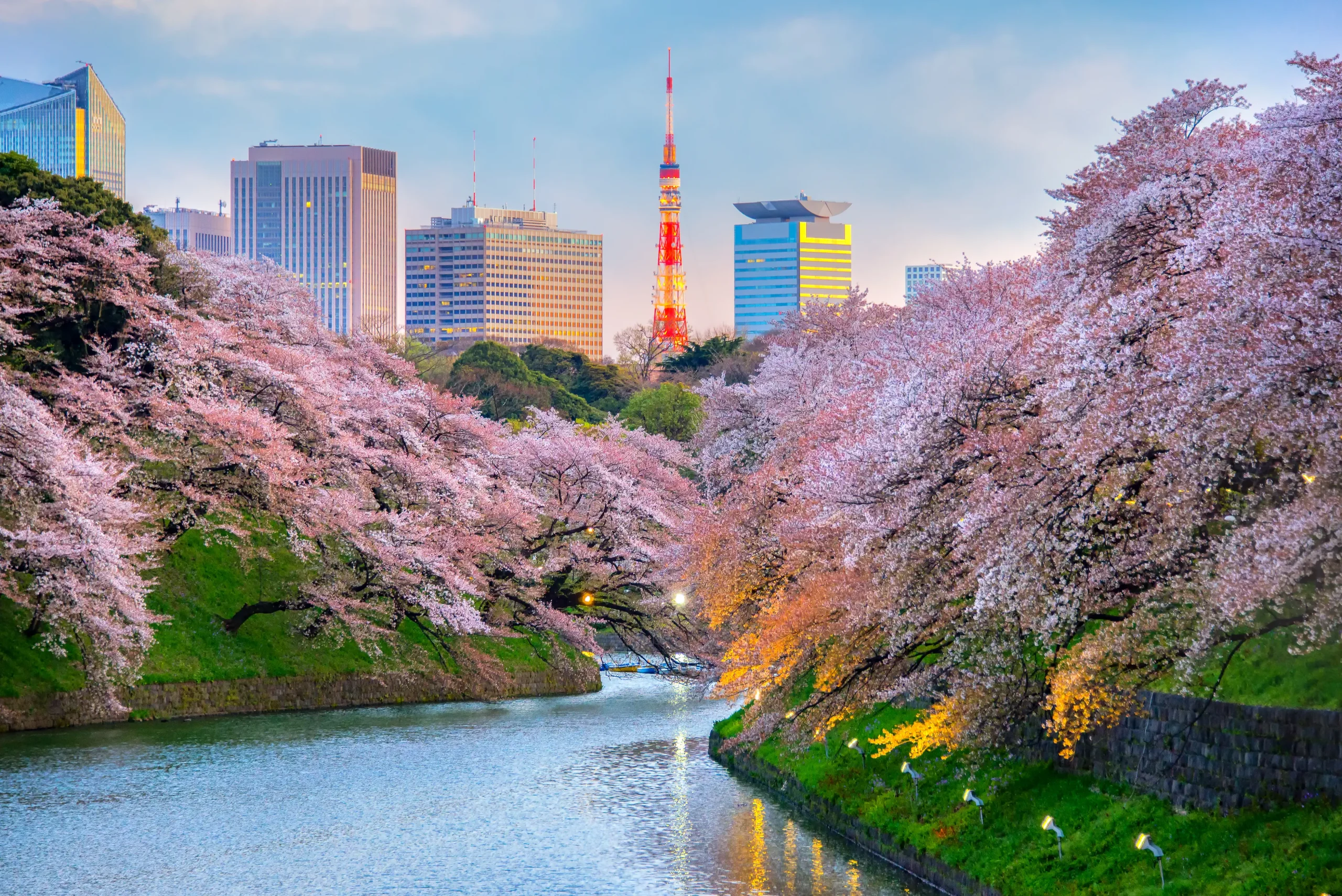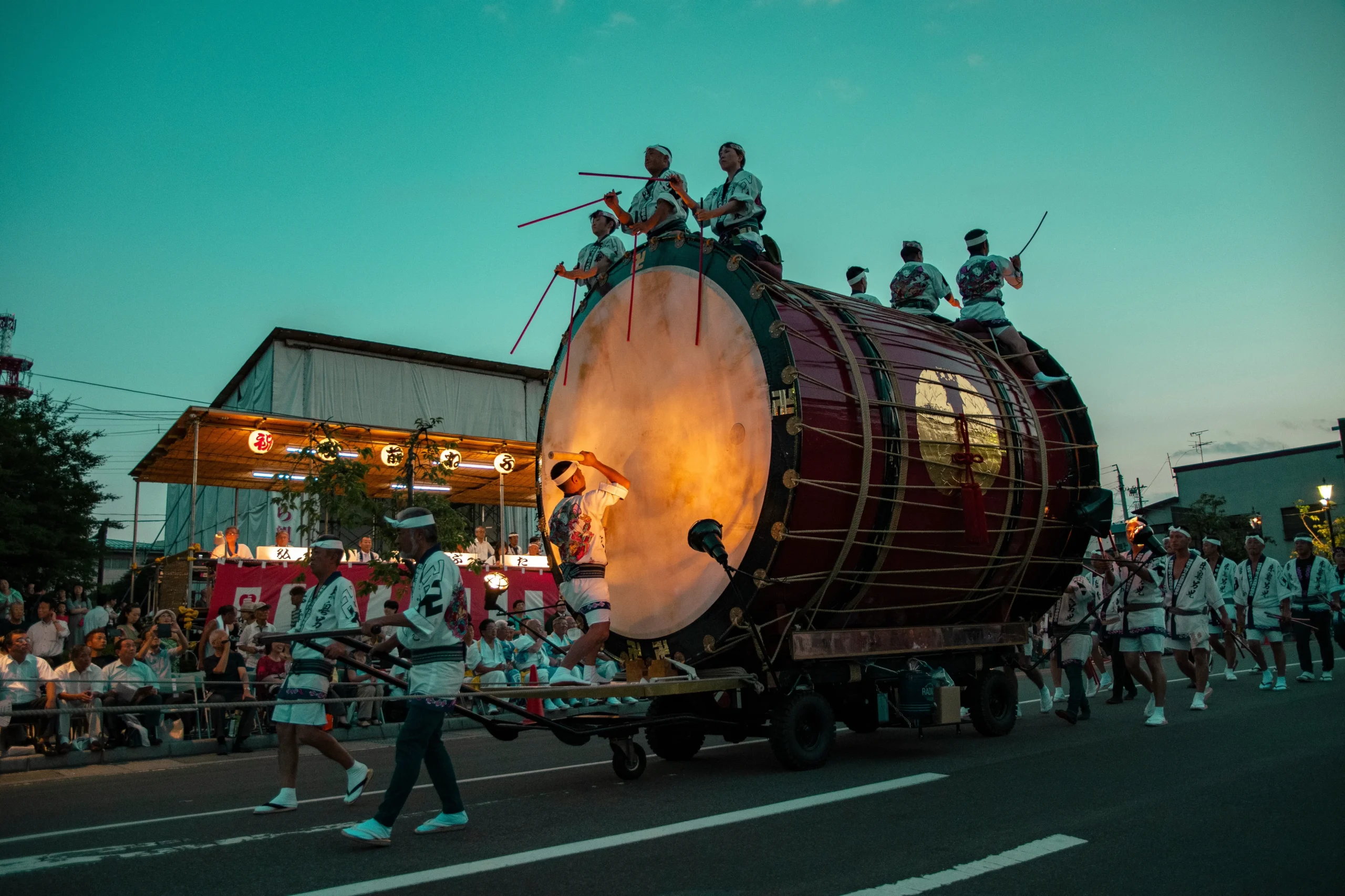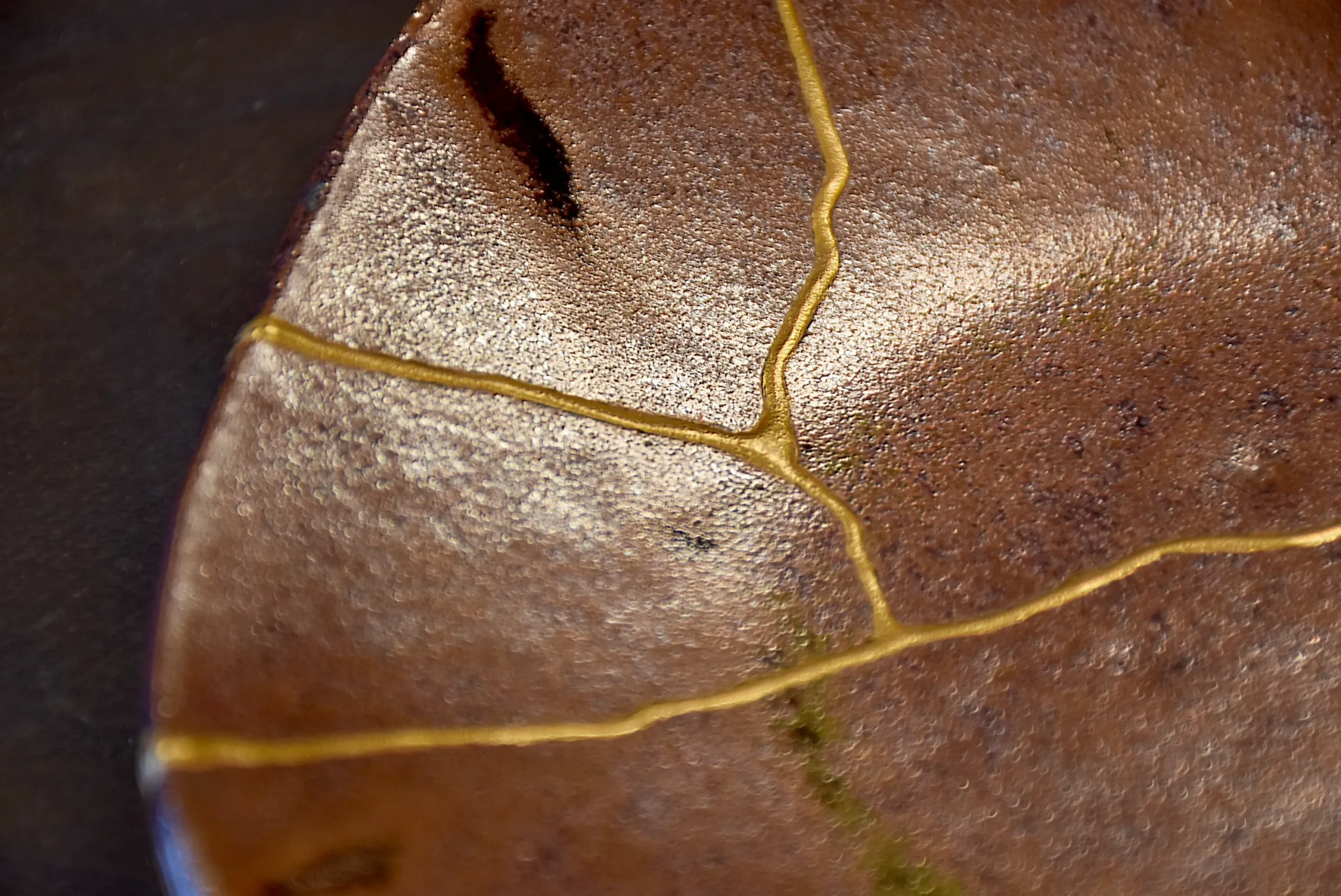Kaiseki ryori is a traditional Japanese cuisine that allows one to experience the essence of Japan’s four seasons through all five senses. By understanding the delicate presentation and the meaning behind each dish, the meal itself becomes a unique and memorable experience. This article explores the history, charm, key points for enjoying kaiseki ryori, and essential dining tips.
What is Kaiseki Ryori?
Kaiseki ryori is one of Japan’s traditional cuisines, distinguished by its long history and refined nature. Originally, it was developed as a simple meal served before drinking koi-cha (thick tea) during a Japanese tea ceremony. Because of this, its seasoning is intentionally subtle, designed to complement the tea, while incorporating meticulous techniques that highlight seasonal ingredients. Embodying the aesthetics of wabi-sabi (a philosophy that finds beauty in imperfection and simplicity), its presentation exudes a tranquil beauty that reflects the essence of Japanese aesthetics.
At the same time, it is important to differentiate kaiseki ryori from other similar terms, such as kaiseki and Kyo-kaiseki (a Kyoto-style variation of kaiseki ryori). Kaiseki refers to a multi-course meal served at banquets, featuring an array of exquisite dishes intended to be enjoyed with sake. Today, this style of dining is commonly offered at business receptions and celebratory gatherings. Kyo-kaiseki, on the other hand, is a variation of kaiseki ryori that developed in Kyoto, influenced by shojin ryori (Buddhist vegetarian cooking) and obanzai (home-style Kyoto dishes). It is characterized by delicate presentation and sophisticated flavors. Understanding these distinctions allows for a deeper appreciation of the complexity and artistry of kaiseki ryori.
History of Kaiseki Ryori
The origins of kaiseki ryori trace back to the simple meals consumed by Buddhist monks and the practices they used to endure hunger. During the Azuchi-Momoyama period (1568–1600), monks were allowed only one meal per day. To ease their hunger, they would warm stones and tuck them inside the folds of their robes near their stomachs. This practice gave rise to the term kaiseki meaning “bosom-stone”. At this stage, kaiseki ryori was strictly a part of monastic discipline, far removed from the elaborate meals of later generations.
However, it was Sen no Rikyu, the renowned tea master, who redefined this austere cuisine. He transformed the simple meals intended for monks into a refined style of dining that could be enjoyed at tea gatherings. Through his influence, kaiseki ryori evolved beyond its original purpose of satisfying hunger and became an essential expression of the tea ceremony’s philosophy—remaining simple yet exuding grace and sophistication. Today, kaiseki ryori is widely cherished for its refined flavors and its ability to celebrate the changing seasons.
The Course Flow of Kaiseki Ryori
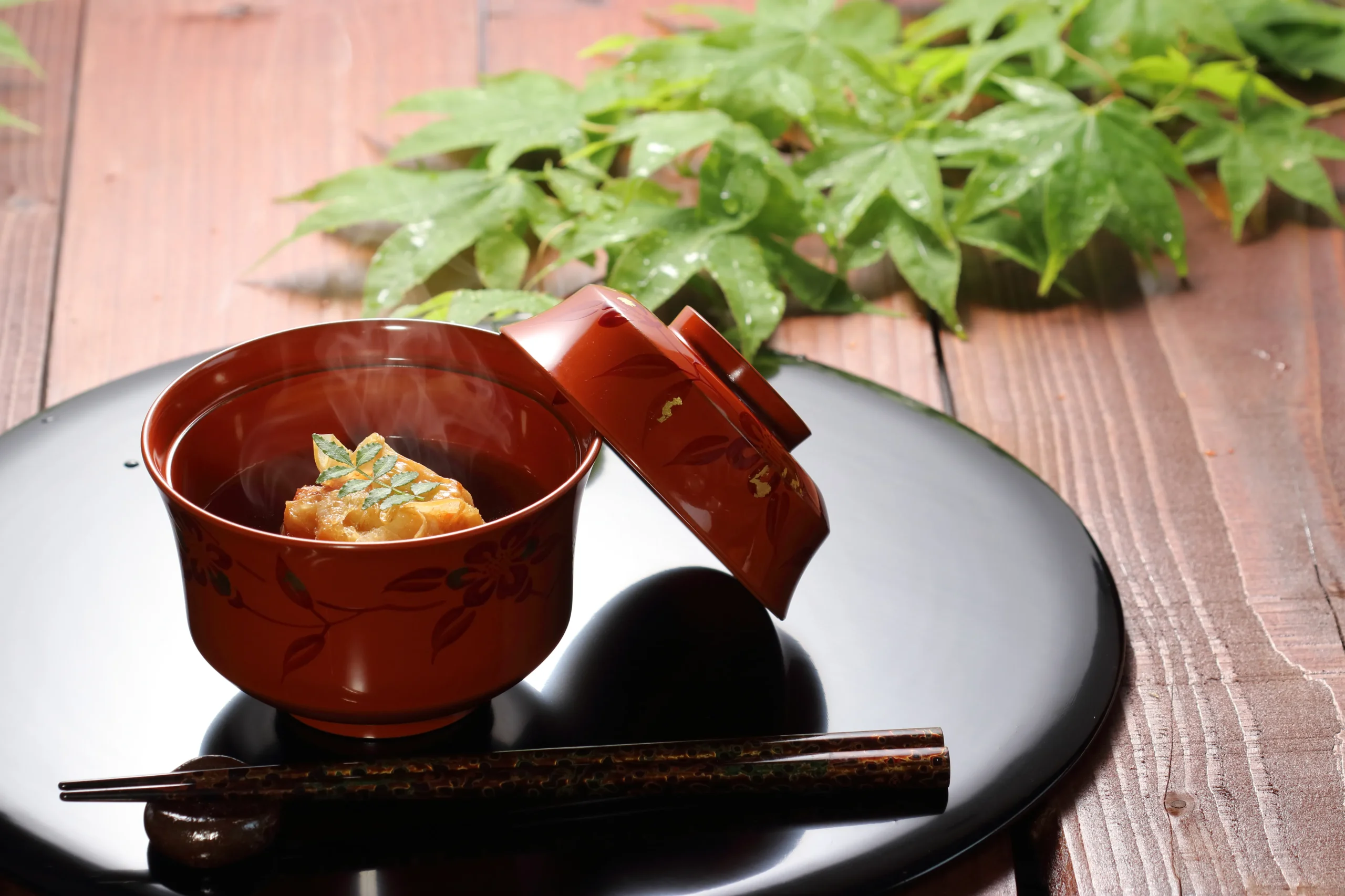
The course of kaiseki ryori is carefully structured, with each dish served in a specific order to create a harmonious dining experience that engages all five senses. At its core, the meal follows the ichiju-sansai (one soup, three dishes) format, and it is characteristic that the course begins with rice and soup.
The first dish served is called oshiki, which consists of rice, soup, and mukozuke (sashimi or similar items) arranged on a single tray. The typical placement follows a standard style: rice on the left, soup on the right, and mukozuke at the back.
Next comes wanmori, which is considered the main dish of kaiseki ryori. This is a clear soup served in a large lacquered bowl, containing seasonal vegetables, fish, or meat. The dish is carefully prepared to highlight the natural flavors of the ingredients.
Following this, yakimono (a grilled dish, usually featuring seasonal fish or meat) is served. This grilled dish typically features seasonal fish, carefully cooked to enhance its aroma and flavor. The charred surface brings out the essence of the season, further deepening the sensory experience of the meal.
The next dish, shiizakana, means “a dish that is strongly recommended” or “an additional dish to further enhance the meal.” It is served as an extra dish for those who might find the ichiju-sansai structure insufficient. This course often includes marinated or fried items that pair well with sake.
Afterward, another suimono (clear soup) is presented. This is usually a lightly seasoned broth, sometimes containing plum paste or kelp, and is served as a palate cleanser to refresh the taste buds before the final stages of the meal.
Next is hassun, a small selection of sake-pairing delicacies. This dish showcases a variety of flavors and textures, allowing diners to enjoy the interplay between different ingredients while savoring their drink.
Towards the end of the meal, yuto and konomono (pickled vegetables) are served. Yuto consists of roasted rice steeped in hot water, offering a mild and soothing taste that helps settle the stomach. It is accompanied by konomono, which add a final touch of refreshing acidity.
The final course features omogashi (main confectionery) and koi-cha (thick tea). Japanese sweets, sherbet, or seasonal fruits are served to provide a gentle and satisfying conclusion to the meal. In some establishments, thick matcha tea is offered, emphasizing the deep connection between kaiseki ryori and the spirit of the Japanese tea ceremony.
The course of kaiseki ryori flows seamlessly from one dish to the next, with each component thoughtfully designed to hold meaning and purpose. It is more than just a meal—it is an immersive cultural experience that allows diners to appreciate Japan’s seasons, traditions, and the philosophy of the tea ceremony.
Tips for Enjoying Kaiseki Ryori
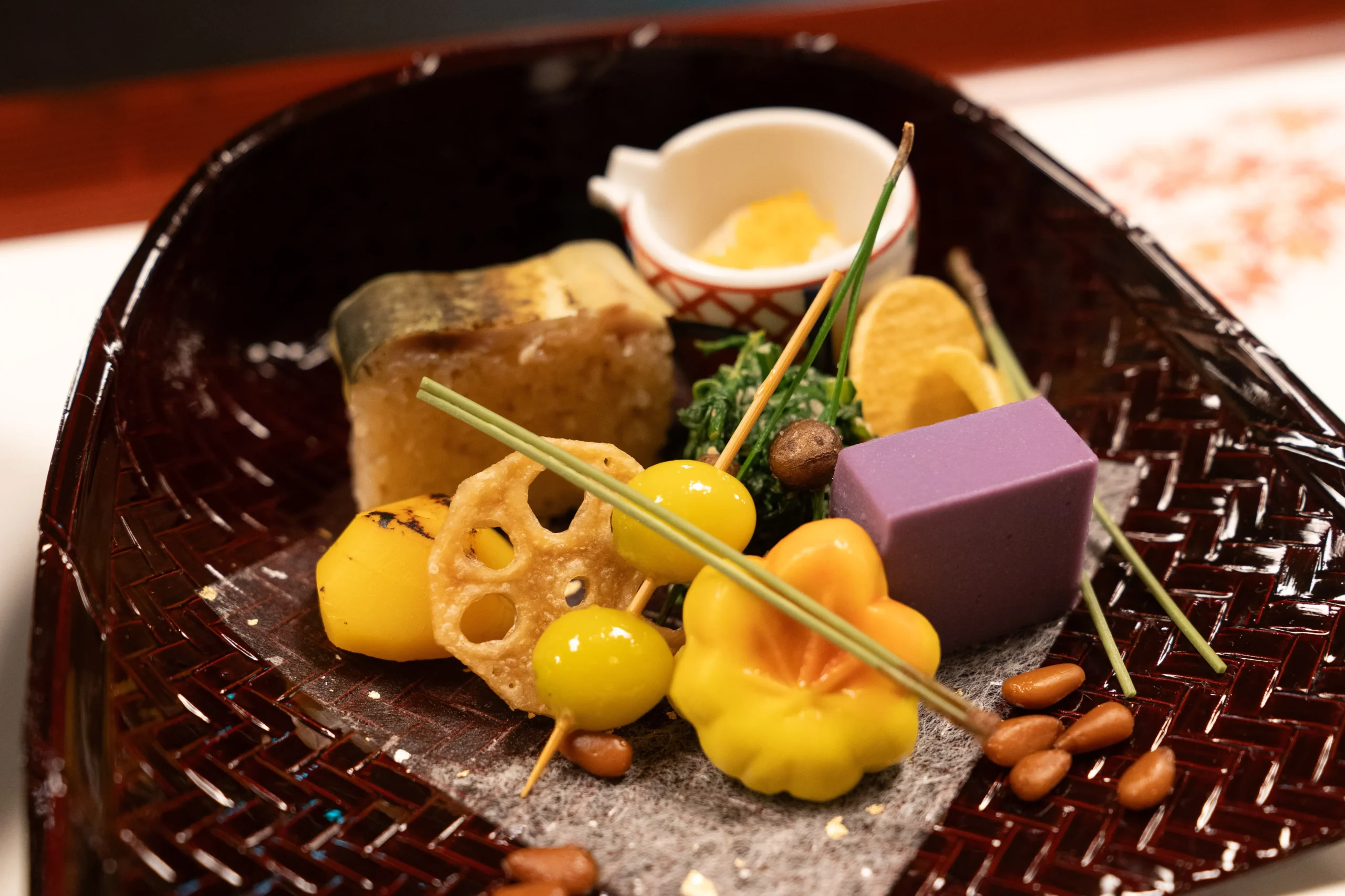
Experiencing Kaiseki Ryori with All Five Senses
The true charm of kaiseki ryori lies not only in its taste but also in the way it engages all five senses, creating a deeper and more immersive dining experience. Each dish is crafted to be appreciated through sight, sound, taste, smell, and touch, elevating the act of eating into a richer, more meaningful moment.
- Sight: The beauty of plating and the harmony of colors.
- Hearing: The sound of ingredients as they are chewed, revealing their textures.
- Taste: The delicate balance of flavors, carefully arranged to complement each other.
- Smell: The aroma of seasonal ingredients enhancing the overall experience.
- Touch: The texture of the food and the way the temperature of the dish and the plate interact.
The Harmony of Dishes and Tableware
Kaiseki ryori is not only about seasonal ingredients but also about the presentation and the tableware that reflect the time of year. The plates and bowls used for serving are carefully chosen to match the seasonal ambiance, adding another layer to the sensory experience.
For example, in spring, plates decorated with cherry blossom motifs may be used, while in autumn, dishes with red and gold hues reminiscent of autumn leaves are selected. These thoughtful choices enhance the visual enjoyment of the meal, making it feel even more connected to nature’s changing scenery.
Creating Unity with the Dining Space
Beyond the harmony between food and tableware, the atmosphere of the room also plays a key role in kaiseki ryori. The hanging scrolls and floral arrangements (ikebana) displayed in the dining area are adjusted according to the season, ensuring that the entire environment resonates with the natural flow of time.
By experiencing the seamless connection between the food, tableware, and the surrounding space, diners can immerse themselves in the seasonal beauty of Japan, making their kaiseki ryori experience truly unforgettable.
Tips for Enjoying Kaiseki Ryori
Signals for Finishing a Meal in Kyo-Kaiseki
In Kyo-kaiseki, there is a traditional way to indicate that you have finished your meal. A polite way to handle a covered dish is to slightly open the lid or set it neatly to the left. Being aware of this custom helps facilitate smooth communication with the restaurant staff and allows for a more seamless dining experience.
Dress Code
Most kaiseki ryori restaurants expect guests to dress in smart casual attire.
For women, dresses, jackets, or coordinated outfits are common choices.
For men, wearing a jacket with pants is considered appropriate, while jeans, shorts, and sandals should be avoided.
Since kaiseki ryori places great emphasis on the delicate aromas of the dishes, it is best to avoid wearing strong perfumes. Additionally, as traditional kaiseki ryori is often served in tatami rooms, guests will be required to remove their shoes. Wearing easily removable footwear and clean socks is recommended.
Expressing Gratitude Instead of Tipping
Kaiseki ryori offers a refined and hospitable dining experience, but Japan does not have a tipping culture, even at high-end restaurants, including those with Michelin stars. Instead of tipping, expressing your appreciation directly to the chef or staff by sharing your thoughts on the meal is considered the highest form of gratitude.
Summary
Kaiseki ryori is a unique culinary experience that embodies Japanese culture and aesthetics. Its history is deeply intertwined with the tea ceremony, evolving with the spirit of wabi-sabi, and expressing the beauty of nature’s transitions through seasonal ingredients and carefully chosen tableware. By understanding the meaning behind each dish and the flow of the meal, diners can fully appreciate the depth and artistry of this sophisticated dining tradition.
